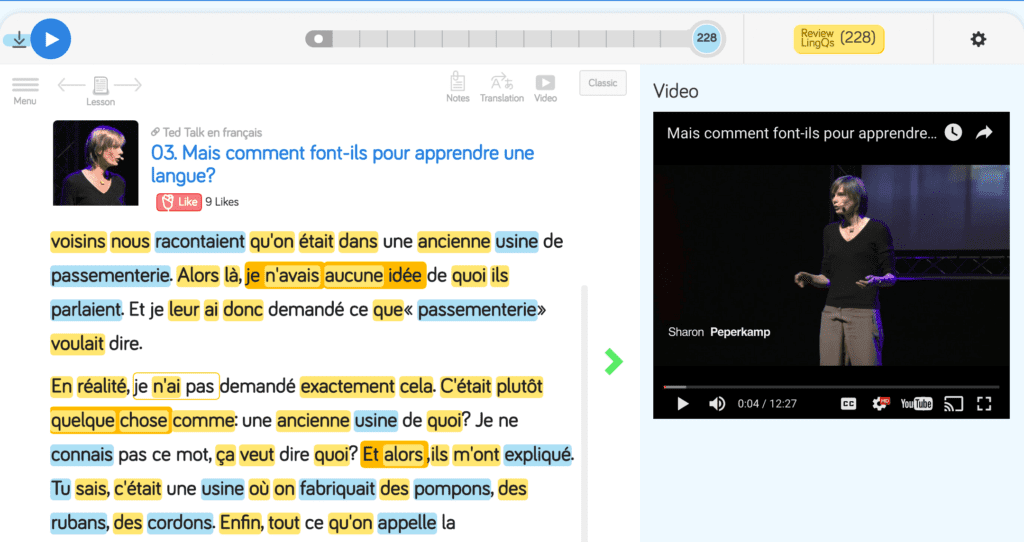Thinking About Flipping Your Classroom?
You might have heard the term “flipped classroom” or “flipped learning” used lately in education circles. It’s a new way of thinking about classroom learning, and it’s taking off in a big way, especially when it comes to language classrooms.
If you’re thinking about flipping your classroom, here’s the lowdown and what the model is, who’s using it and a resource that can help.
What is the flipped classroom model?
The traditional classroom is run with the teacher in front, bestowing years of knowledge upon eager students. This model is what we know, what we’re used to, but is it the most effective one we could be using?

There are a growing group of educators who think that there’s a better way. They want to flip this model on its head, and instead of the teacher playing the role of “sage on the stage” they think they should instead be a “guide on the side”. Instead of giving a lecture during class time and having students work on activities and comprehension tasks mainly at home, in the flipped classroom students watch a video of their teacher’s lecture at home and then get help with tasks during class time.
This flipped model was developed to make education more effective and fair. There are many students who don’t have access to the same support and resources at home as others, and their grades may suffer as a result. In a flipped classroom the teacher has more time to answer questions, monitor tasks and clear up any confusion or misunderstandings about the topic.
How did it start?
The idea of flipping the classroom originated in the ‘90s. Educator Alison King wrote an article for College Teaching Magazine that championed class time as a time to construct meaning rather than give information. This opened the door to the idea that class time could be more than a lecture and paved the way for educators like Harvard professor Eric Mazur, who developed the peer instruction method and Salman Khan, founder of Khan Academy.

Who is using it?
Schools around the world are adopting the flipped classroom model. The first school to flip all of its classes was Clintondale High School in Michigan, USA. Previously rated one of the worst schools in the state, after making the switch to 100% flipped classrooms in 2011 Clintondale went from a failure rate of 35% to 10%, and college enrolment went up from 63% to 80% – in just two years!
If those numbers aren’t impressive enough, check out what Clintondale student Gisselle De La Cruz Diaz had to say about the new way her school does things:
“Once I came over here, it was completely different. I absolutely loved that I could get the teacher’s help in the classroom. I honestly went from a D, F — those were my basic grades — to almost all A’s right now.”
Study this video as a lesson on LingQ HERE.
What are the benefits?
Access to Information
With the flipped classroom model students can access the video of their teacher’s lecture anytime. Ever wished you could hit rewind in class because you missed something, or pause so you could mull things over a bit before moving forward? With lecture videos you can. Students can also watch the videos as many times as they need to, which increases their chance of understanding the subject material.
More Activity
No matter how interesting the class, it’s easy to drift off every now and then when teachers are talking, especially for students who have multiple classes per day. But when students listen to the lecture outside of the classroom and complete tasks and take part in group work during class time, student engagement increases. It’s a lot more difficult to nod off in mid-conversation after all.
Power Shift
Using class time for activities means that the students are more in control of their learning. Instead of the teacher talking at them, they control the conversation with questions and discussion topics they have had a chance to think of while watching the lecture before class. There is also more onus on the students to be prepared and engaged. If they don’t watch the lecture videos, they won’t be able to get the most out of class time.
How can LingQ be used in a flipped classroom?
The LingQ system is the perfect resource for a flipped language classroom. The huge libraries in 26 languages make it easy to find interesting content on any topic to truly engage your students.
All videos and audio come with transcripts, so students can follow along and work on their reading and listening skills. The LingQ reader also allows students to translate words and phrases with a click and add them to their database. From there, they can study them with the flashcards, cloze tests, dictation and multiple choice questions.
Take this TED talk in the French library for example. Students can see the video in the blue panel and read along to what Sharon Peperkamp is saying. The yellow words and phrases are ones they are learning from previous lessons, the blue words are words they have never come across before and the white ones are words they know.

Students can click the Review LingQs button above the video at anytime in a lesson to study the yellow words and phrases they are learning –we call them LingQs. Once they finish a lesson, they can see how they’re progressing in the language. Each student’s statistics are tracked and displayed in the LingQ teacher interface, so checking how your students are doing at home is easy.
***
Flipping your classroom is a huge change, but as Einstein once said: “The world as we have created it is a process of our thinking. It cannot be changed without changing our thinking.”
